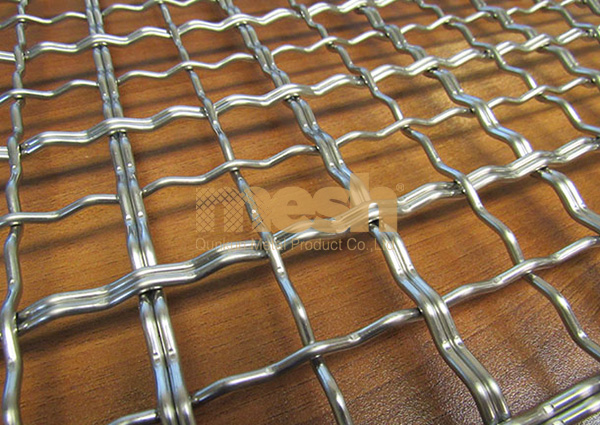Architectural woven mesh has emerged as a key player in this sustainable design movement, revolutionizing the way we envision and construct eco-friendly buildings. Sustainability is no longer a mere buzzword; it's a defining aspect of modern architecture. Designers and architects are increasingly embracing sustainable practices, seeking innovative ways to reduce environmental impact while creating aesthetically pleasing and functional spaces. In this article, we explore how architectural woven mesh is paving the way for a green approach to building design, focusing on sustainability and environmental consciousness.

1. The Sustainable Imperative in Architecture
In an era grappling with climate change and dwindling resources, sustainability in architecture is no longer an option—it's a necessity. Sustainable buildings aim to minimize their negative environmental impact throughout their lifecycle, from construction to operation and eventual demolition. It's about finding a harmonious balance between environmental responsibility, social equity, and economic viability.
2. Architectural Woven Mesh: A Sustainable Marvel
Architectural woven mesh is a versatile material made by interlocking metal wires in intricate patterns. Its sustainability lies in its composition—often made from recycled or recyclable metals like stainless steel, aluminum, or copper. Woven mesh is durable, lightweight, and highly flexible, allowing for innovative designs while leaving a minimal environmental footprint.
3. Energy Efficiency through Passive Design
Architectural woven mesh contributes to energy-efficient buildings through passive design strategies. By strategically integrating mesh into building facades, it can provide natural shading and ventilation. This reduces reliance on artificial heating and cooling systems, leading to energy savings and lower greenhouse gas emissions.

4. Material Efficiency and Recycling
The use of recycled materials in architectural woven mesh underscores its sustainability. Recycled metals reduce the need for virgin raw materials, conserving natural resources and minimizing waste. Furthermore, at the end of its lifecycle, woven mesh can be recycled, extending its sustainable lifecycle and reducing the burden on landfills.
5. Adaptive Reuse and Longevity
Architectural woven mesh supports adaptive reuse—a sustainable practice of repurposing existing structures or materials. When used as part of building renovations or expansions, it adds a contemporary touch while preserving the essence of the original structure. Its durability ensures a long lifespan, contributing to sustainability by reducing the frequency of replacements.

6. Daylighting and Indoor Environmental Quality
Woven mesh's ability to allow natural light into a building—daylighting—enhances indoor environmental quality. Natural light creates a healthier and more productive indoor environment, reducing the need for artificial lighting. This sustainable feature minimizes energy consumption and associated greenhouse gas emissions.
Conclusion
Architectural woven mesh is more than just a building material—it's a symbol of progress towards a sustainable future. With each application, it reinforces the commitment of the architecture and design industry towards a greener and more responsible approach. As we forge ahead, architectural woven mesh will remain an essential tool, shaping a world where architecture harmonizes with the planet, promoting sustainability and leaving a positive legacy for generations to come.
pre:Woven Wire Drapery Trends: Keeping Your Home Fashionable
next:Architectural Woven Mesh: The Intersection of Art and Engineering
© 2025 Joinwin Architectural Wire. All Rights Reserved. | Sitemap
Recommended Read
Building Decoration Network: Intelligent and Sustainable Development for the Future
Environmental protection and sustainable development of metal decorative wire mesh